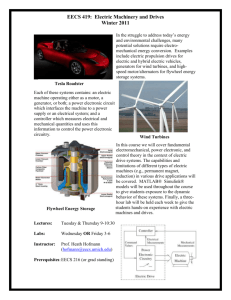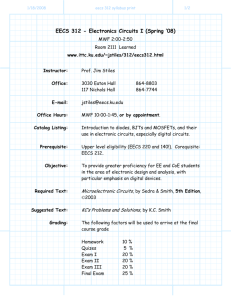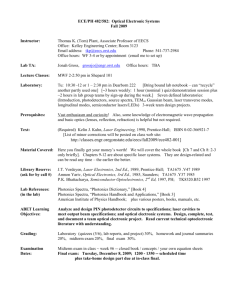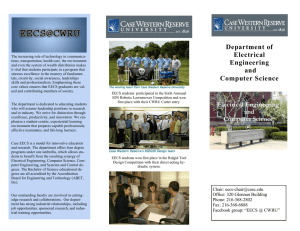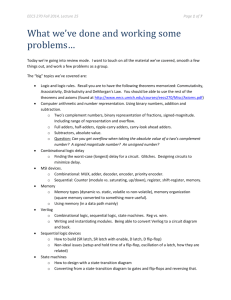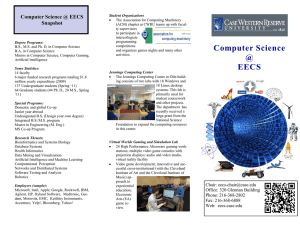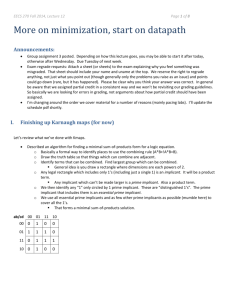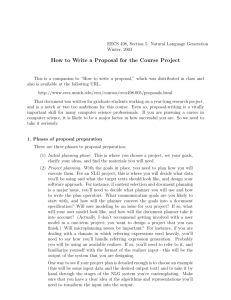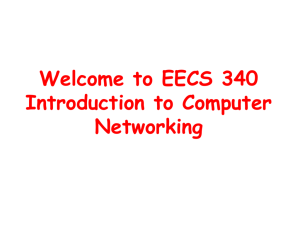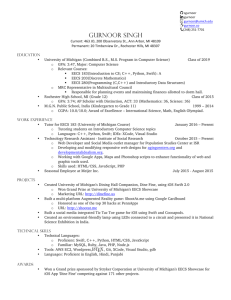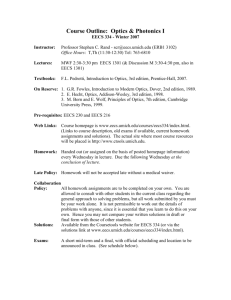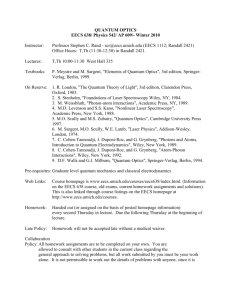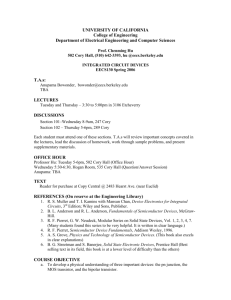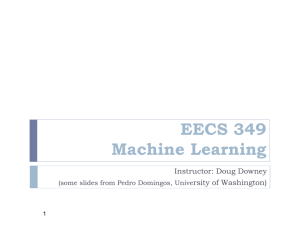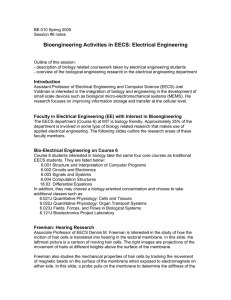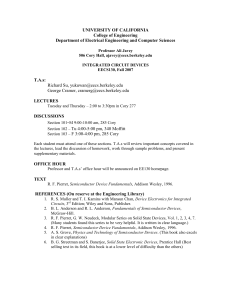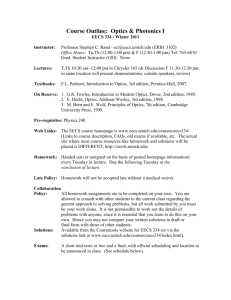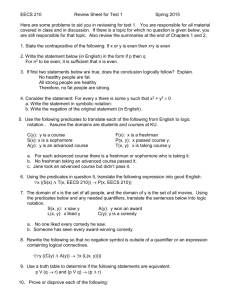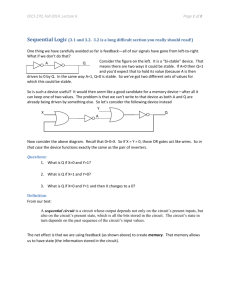docx
advertisement
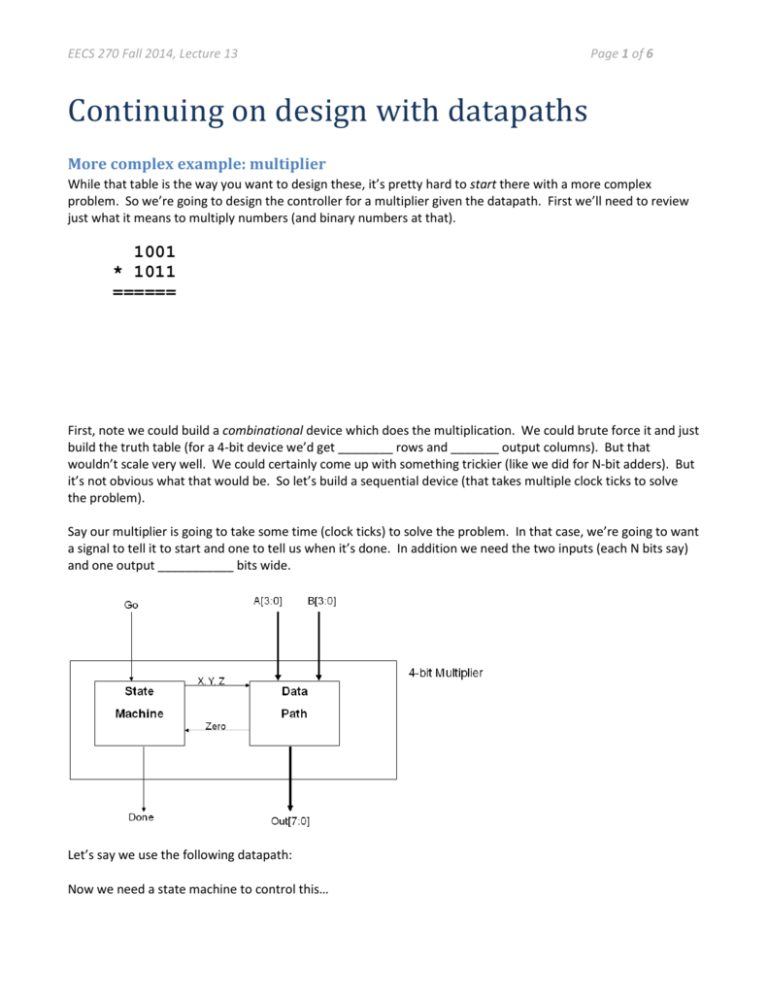
EECS 270 Fall 2014, Lecture 13 Page 1 of 6 Continuing on design with datapaths More complex example: multiplier While that table is the way you want to design these, it’s pretty hard to start there with a more complex problem. So we’re going to design the controller for a multiplier given the datapath. First we’ll need to review just what it means to multiply numbers (and binary numbers at that). 1001 * 1011 ====== First, note we could build a combinational device which does the multiplication. We could brute force it and just build the truth table (for a 4-bit device we’d get ________ rows and _______ output columns). But that wouldn’t scale very well. We could certainly come up with something trickier (like we did for N-bit adders). But it’s not obvious what that would be. So let’s build a sequential device (that takes multiple clock ticks to solve the problem). Say our multiplier is going to take some time (clock ticks) to solve the problem. In that case, we’re going to want a signal to tell it to start and one to tell us when it’s done. In addition we need the two inputs (each N bits say) and one output ___________ bits wide. Let’s say we use the following datapath: Now we need a state machine to control this… EECS 270 Fall 2014, Lecture 13 Page 2 of 6 EECS 270 Fall 2014, Lecture 13 Page 3 of 6 EECS 270 Fall 2014, Lecture 13 Page 4 of 6 EECS 270 Fall 2014, Lecture 13 Page 5 of 6 EECS 270 Fall 2014, Lecture 13 Another example: laser distance sensor. Laser light travels at speed of light, 3*108 m/sec Distance is thus D = T sec * 3*108 m/sec / 2 Inputs/outputs o B: bit input, from button to begin measurement o L: bit output, activates laser o S: bit input, senses laser reflection o D: 16-bit output, displays computed distance Page 6 of 6

